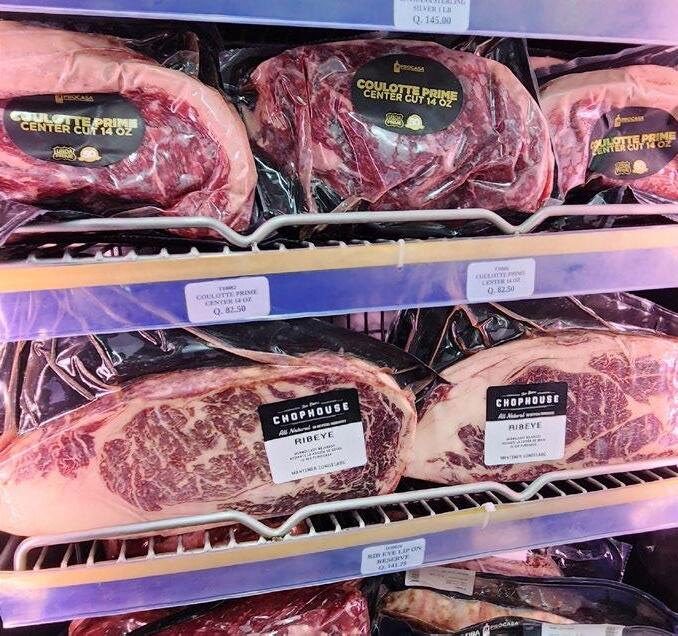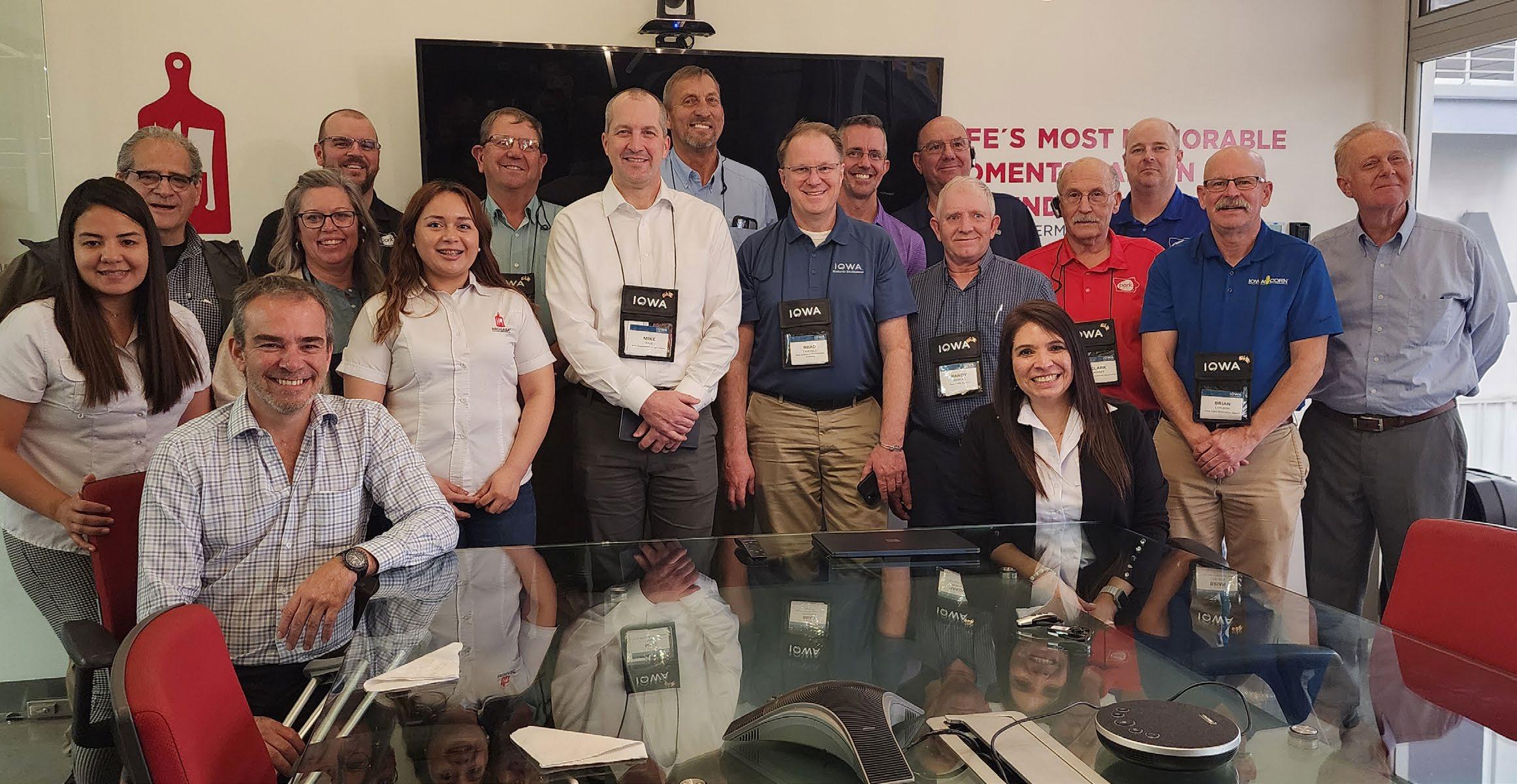
5 minute read
Quality Drives Exports
Consumer preference for quality drives U.S. meat, soy exports to Central America
By Aaron Putze, APR, ISA Chief Officer of Brand Management and Engagementaputze@iasoybeans.com
Life's most memorable moments happen around food." - Don Guillermo Quirch
This celebratory statement, boldly proclaimed in the test kitchen of Guatemalan meat processor and retailer Procasa, embodies why demand for meat and poultry is surging in the country of 18 million people.
Memorable food is also the reason why exports of U.S. soybean meal, a key feed ingredient for livestock, poultry, fish, shrimp and dairy production, and U.S. beef and pork are increasing to destinations throughout Central America.
“Once they taste quality — whether dining in or away from home — they want more of it,” says Iowa Soybean Association (ISA) President Brent Swart of Spencer.
He was one of 10 farmers participating in an Iowa Economic Development Authority (IEDA) trade mission to Central America.
“They also know that no one provides a better quality product than Iowa and U.S. farmers.”
Opened in 1974 as a Guatemalan livestock processor, Procasa has evolved into a leading meat retailer. The family business is Guatemala’s largest importer of meat (yes, more than Walmart) and among a growing number of retailers throughout the region networking with the U.S. Soybean Export Council (USSEC) and U.S. Meat Export Federation (USMEF) to market quality and tasty food.
ISA District 4 Director Jeff Frank of Auburn joined Swart, Iowa Ag Secretary Mike Naig and representatives of Iowa Corn, Iowa Farm Bureau, Iowa Pork and the Iowa Beef Industry Council on the trade mission to Guatemala and Costa Rica. He noted how representatives of both USSEC and USMEF are working on behalf of the U.S. farmer to increase exports of high-quality protein.
“They do a great job talking about our focus as farmers on quality and being environmental stewards while demonstrating the many ways to prepare and enjoy meat and poultry,” Frank says. “They’re also building relationships between the U.S. farmer and the buyers of what we produce. Trust matters in business, and it starts with good, strong relationships.”
USSEC focuses on differentiating, elevating preference, and attaining market access for the use of U.S. soy for human consumption, aquaculture, and livestock feed in 80+ countries internationally. USMEF collaborates with USSEC and other partners to increase the value and profit opportunities for U.S. beef, pork and lamb by putting U.S. meat on the world’s table.

USSEC focuses on differentiating, elevating preference, and attaining market access for the use of U.S. soy for human consumption, aquaculture, and livestock feed in 80+ countries internationally. USMEF collaborates with USSEC and other partners to increase the value and profit opportunities for U.S. beef, pork and lamb by putting U.S. meat on the world’s table.
Both organizations receive funding annually from ISA to enhance their work and outreach. Procasa provides product to numerous Guatemalan eateries including Burger King, Wendy’s, TGI Fridays and Carl’s Jr. In 2018, it introduced the tomahawk, a steak and pork cut that became an immediate star in high-end restaurants throughout the country.
In addition to its wholesale meat distribution, Procasa operates more than 40 consumer-oriented stores, including 28 in country’s capital of Guatemala City. Each sells premium, cut-to-order products in smaller quantities. This business strategy caters to consumers who want to spend less time shopping and preparing meals.
“Consumer preference is trending to the grab-and-go,” said Natalia Morales, media and strategic coordinator for Procasa. “They are in and out as they want to get home for dinner.”
With help from USSEC and USMEF, consumers are becoming more skilled at choosing and preparing the kind of product they want to enjoy in the company of family and friends.
“Customer knowledge of the various meat cuts and ways to prepare it is growing,” Morales says. “We have people in the stores who answer their questions, which adds to the in-store experience.”
Procasa and other meat retailers prominently tout their relationship with U.S. soy, pork and beef. The alliances are featured prominently in stores and on menus and delivery trucks.

Backyard and community barbecue events where various cuts are introduced, prepared and sampled are becoming increasingly popular in Guatemala and throughout Central America, says Lucia Ruano, a USMEF regional representative.
“People feel the energy,” Ruano says. “It changes their perspective of meat consumption. They want to create new experiences like having bigger and more juicy cuts that bring the flavor.”
Retailers of premium U.S. meat are enjoying a growth spurt. Procasa plans to add six stores this year as consumer demand for prime and choice cuts of U.S. pork and beef continue their upward trajectory.
“People don’t ask about price as much as they are looking for quality and taste,” Ruano says.
“If they have the means, they buy it.”
And that’s music to the ears of ISA’s Swart.
“Exporting more high-quality meat is one of the best value-added opportunities for increasing domestic use of soybean meal,” he says.
“That, combined with selling meal direct to Central America for their growing poultry and egg production, bodes well at a time when Iowa farmers need every market to boost demand and prices.”










